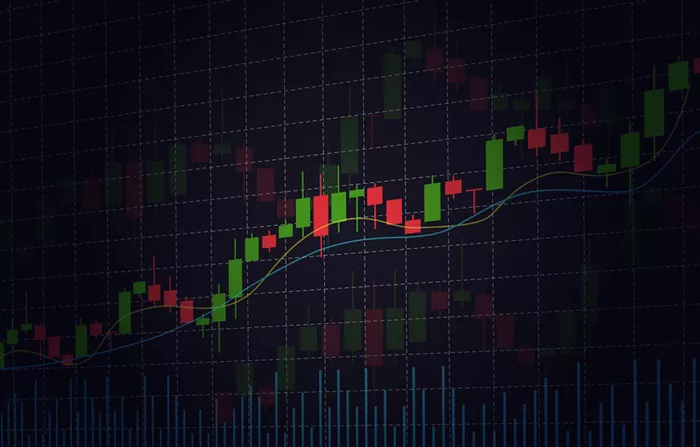Global financial markets saw a momentary pause on Wednesday as investors grappled with the potential implications of U.S. President-elect Donald Trump’s latest tariff threats and economic policies. Following Trump’s vow to impose new tariffs on Mexico, Canada, and China, global stocks remained in a holding pattern, while currencies showed mixed performance as market participants sought clarity on the future of international trade relations.
On the day after Trump’s tariff announcements, U.S. stocks were poised for a slightly lower opening, as global investors reacted to the potential disruption caused by the new levies. The MSCI Asia-Pacific index, which tracks the broader regional stock performance, managed to recover from early losses, edging up by 0.1%. However, the pan-European STOXX 600 index fell by 0.4%, reflecting investor concerns across Europe.
Stocks in Asia were significantly affected, with markets in Japan, Taiwan, and South Korea leading the losses. In contrast, Chinese and Hong Kong equities showed signs of resilience, rebounding from recent lows amid expectations that Beijing would implement more stimulus measures to counteract the effects of U.S. tariffs and stimulate the struggling Chinese economy.
The U.S. dollar struggled to maintain momentum, falling by 0.2% to $1.0515 per euro and easing to $1.26 against the British pound. The U.S. dollar also dropped nearly 1% to 151.660 yen as investors sought safe-haven assets, driving the Japanese yen to a three-week high. This was in response to lower Treasury yields, which contributed to the weakening of the U.S. currency.
The Canadian dollar (loonie) and the Mexican peso hovered near multi-year lows, reflecting market unease over the new tariffs. China’s yuan also fell towards a four-month low, adding to the pressure on emerging market currencies.
With the U.S. Thanksgiving holiday approaching, many investors appeared to take a cautious stance, reducing their exposure to riskier assets as November draws to a close. Trading volumes were expected to remain light as investors extended their breaks into the long holiday weekend. Furthermore, traders are keeping a close eye on the upcoming reading of the U.S. Personal Consumption Expenditures (PCE) deflator, a key inflation measure, which could offer further insight into the trajectory of U.S. economic growth and inflation.
The announcement of new tariffs, which includes a 25% levy on goods from Mexico and Canada and a 10% tariff on products from China, has sparked concerns about potential retaliatory actions from affected countries. At the same time, Trump’s selection of trade lawyer Jamieson Greer as U.S. trade representative has raised expectations of a continued hardline stance on trade. However, Trump’s appointment of a Treasury secretary with a pragmatic approach to fiscal policy has provided some reassurance to U.S. bond markets.
Samy Chaar, Chief Economist at Lombard Odier, noted, “We’re trying to navigate the volatility in Trump’s communication—on the one hand, we have aggressive tariff threats, but on the other, his Treasury pick signals a more pragmatic approach to managing the U.S. government debt.”
While some analysts see Trump’s policies as potentially positive for U.S. business conditions, they could present challenges for the global economy. “The U.S. may benefit, but the rest of the world will need to adapt to avoid disruptions and higher costs in accessing U.S. markets,” Chaar added.
Despite the overall volatility in traditional markets, Bitcoin showed signs of recovery after a four-day retreat from its all-time high of $99,830. The world’s largest cryptocurrency gained 1.7%, reaching $93,211. This movement underscores Bitcoin’s ability to find support in times of uncertainty, as investors increasingly view it as a store of value amidst global economic concerns.
Meanwhile, gold prices saw a slight uptick of 0.3%, reaching approximately $2,649 per ounce, signaling increased investor demand for safe-haven assets. Oil prices remained relatively stable as markets assessed the potential impact of a ceasefire deal between Israel and Hezbollah. Brent crude futures fell by 0.1% to $72.72 a barrel, while U.S. West Texas Intermediate crude futures edged up by 0.1%, settling at $68.84 a barrel.
As global markets contend with a mix of geopolitical tensions, economic uncertainties, and policy changes, the outlook remains cautiously volatile. Analysts are watching closely for further developments in U.S. trade policies, particularly the new tariff measures announced by Trump, as well as any signs of retaliatory actions from China, Mexico, and Canada.
Investors are urged to remain vigilant as the market adjusts to the latest economic developments, particularly as the global economy navigates the potential ripple effects of these tariffs. With U.S. stocks experiencing some pressure and currencies fluctuating, the coming days may present both risks and opportunities for market participants.
Read more:

